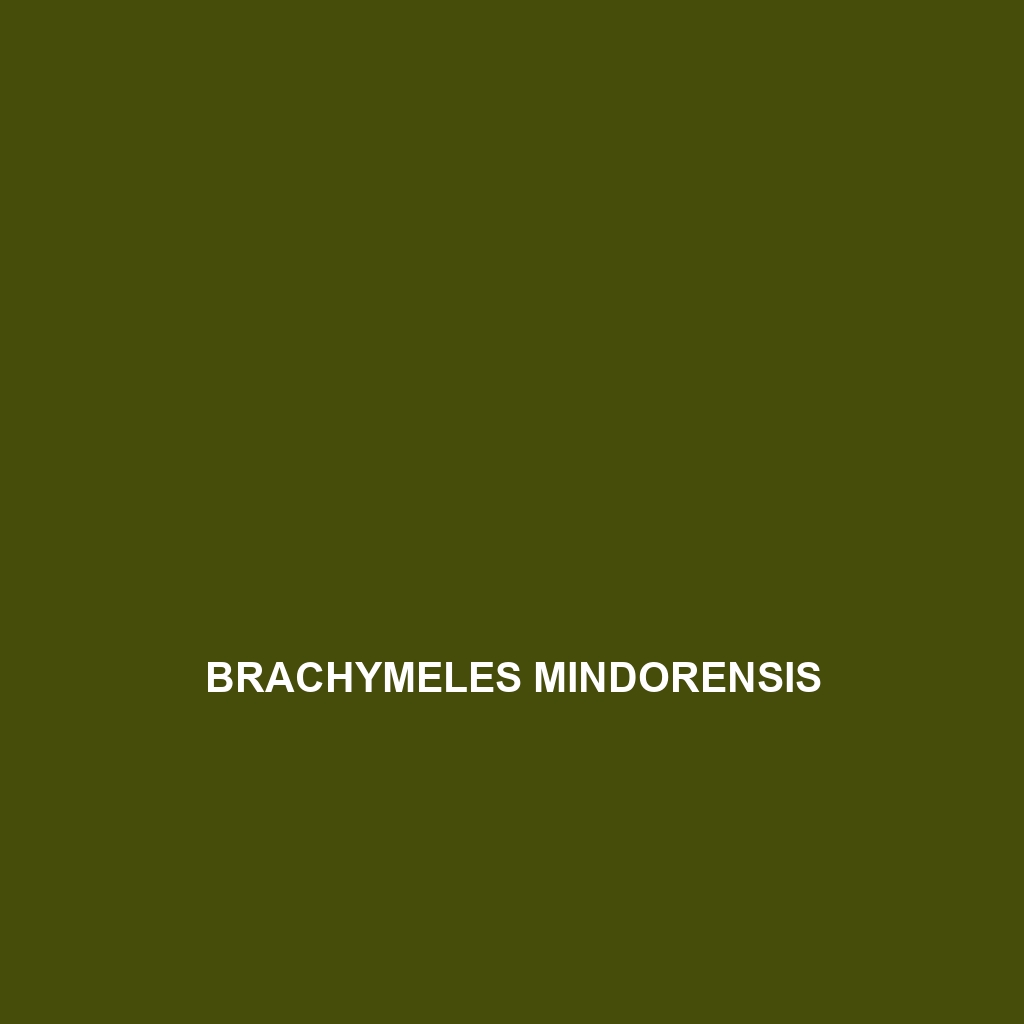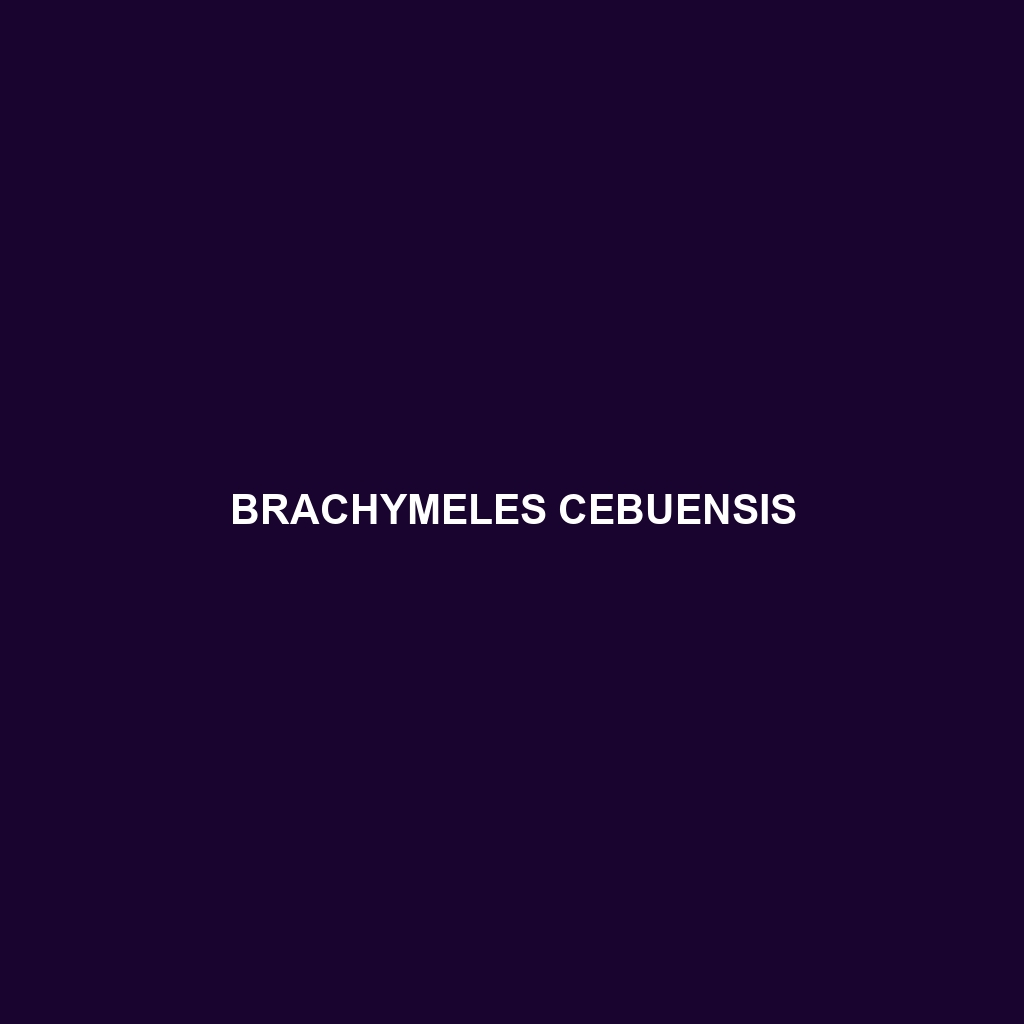
Tag: wildlife conservation
-

Brachymeles mindorensis
Discover the unique Brachymeles mindorensis, a slender, nocturnal skink native to the tropical rainforests of Mindoro, Philippines. With its fascinating burrowing behavior and important ecological role, this vulnerable species thrives in moist, shaded environments, feeding on insects and contributing to soil health.
-

Brachymeles lukbani
Discover the Brachymeles lukbani, also known as the Luzon skink, a unique nocturnal species native to the lush forests of the Philippines. This small, elongated lizard features smooth scales, a mottled coloration for camouflage, and plays a vital role in its ecosystem by controlling insect populations and contributing to soil health.
-

Brachymeles ligtas
Discover the Brachymeles ligtas, a small, nocturnal skink native to the tropical forests of Mindanao, Philippines. With its streamlined body, excellent camouflage, and unique adaptive behaviors, this vulnerable species plays a vital role in its ecosystem as both a predator and prey.
-

Brachymeles ilocandia
Discover the Brachymeles ilocandia, or Ilocano skink, a slender, agile reptile native to the humid tropical forests of Luzon, Philippines. This insectivorous species features smooth, shiny scales and exhibits fascinating behaviors such as burrowing and tail regeneration, while playing a crucial role in controlling insect populations within its ecosystem.
-

Brachymeles elerae
Discover the fascinating Brachymeles elerae, a vulnerable skink native to the Philippines, known for its nocturnal habits, unique adaptations for navigating leaf litter, and important role in the ecosystem as both predator and prey. With its slender body, earthy coloration, and ovoviviparous reproduction, this species highlights the rich biodiversity of moist lowland forests.
-

Brachymeles cobos
Discover the Brachymeles cobos, a fascinating nocturnal skink from the lush forests of the Philippines, characterized by its slender body, earthy coloration, and reduced limbs adapted for burrowing. This Vulnerable species plays a crucial role in soil aeration and nutrient cycling within its ecosystem, primarily feeding on invertebrates found in leaf litter.
-

Brachymeles cebuensis
Brachymeles cebuensis, known as the Cebu skink, is a vulnerable species endemic to the tropical forests of Cebu Island, Philippines. This nocturnal, burrowing skink measures 20 to 30 cm in length, features a streamlined body with reduced limbs, and primarily feeds on small invertebrates, playing a crucial role in its ecosystem.
-

Brachymeles burksi
Brachymeles burksi, commonly known as the legless skink, is a slender, elongated species native to the tropical rainforests of Mindanao and Leyte in the Philippines. This fascinating skink, reaching lengths of 15-20 cm, is nocturnal, ovoviviparous, and plays a vital role in its ecosystem by controlling insect populations and contributing to soil health.
-

Brachymeles brevidactylus
Discover the fascinating Brachymeles brevidactylus, or short-toed skink, a unique insectivorous species found in the tropical rainforests of the Philippines, recognized for its smooth scales, reduced hind limbs, and nocturnal foraging behavior, while playing a crucial role in maintaining ecological balance. This species is currently classified as Vulnerable due to habitat loss, making conservation efforts…
-

Brachylophus gau
Discover the vibrant Brachylophus gau, or Fiji banded iguana, a stunning reptile native to the tropical forests of Fiji, known for its striking green coloration with blue or yellow bands and its role in seed dispersal. This vulnerable species thrives in warm, humid environments and primarily feeds on leaves, fruits, and flowers, making it a…
Search
Popular Posts
-
Dipsas ventrimaculata
striking Dipsas ventrimaculata, or Ventrimaculate Snake, known for its slender body and striking camouflage. Found in the tropical forests of Central and South America, this nocturnal predator primarily feeds on slugs and snails, playing a vital role in its ecosystem.
-
Dipsas variegata
captivating Dipsas variegata, or variegated snail eater, a striking snake with dark brown and yellow bands, thriving in the humid rainforests of Central and South America. This non-aggressive, nocturnal predator specializes in consuming land snails, playing a crucial role in maintaining ecological balance.
-
Dipsas vagus
Dipsas vagus, or Vagus Snake, a slender, non-venomous species native to tropical Central and South American rainforests, known for its brown and gray camouflage and a diet primarily consisting of slugs and snails. Classified as Vulnerable, this fascinating snake plays a crucial role in its ecosystem by regulating prey populations while employing cryptic behavior to…
Categories
Archives
Tags
animal adaptations (713) animal behavior (4666) animal reproduction (763) bat species (661) behavior (915) biodiversity (6774) conservation (1670) conservation efforts (1415) conservation status (4595) diet (2090) echolocation (822) ecological balance (1400) ecological role (1276) ecology (789) ecosystem (1468) ecosystem role (2606) ecosystem roles (632) endangered species (2368) environmental conservation (657) habitat (3224) habitat conservation (884) Habitat Destruction (922) habitat loss (2877) insectivorous reptiles (643) IUCN Red List (1343) nocturnal animals (2688) nocturnal behavior (2186) omnivorous diet (594) physical characteristics (1958) reproduction (2835) reptile conservation (846) rodent (677) rodent species (1325) seed dispersal (2043) Seed Disperser (950) seed dispersers (590) small mammals (1163) snake reproduction (589) South America (773) species description (713) tropical forests (932) Vulnerable Species (4332) wildlife (2506) wildlife conservation (4371) wildlife protection (799)


